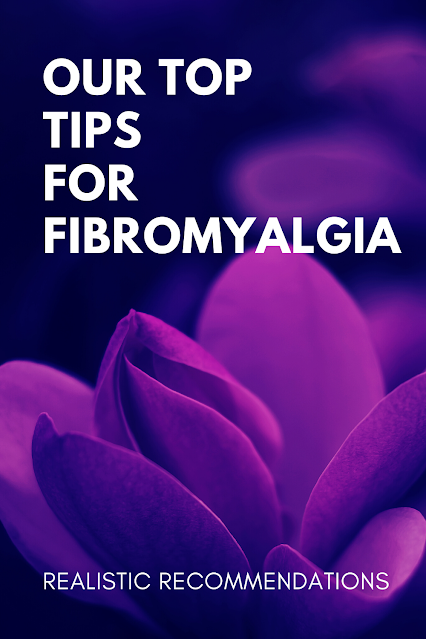Dizziness is a symptom that is often attributed to fibromyalgia but it is a complex symptom because it can have so many causes. It is also a symptom that may be overlooked, or not even mentioned to the doctor, because pain and stiffness and fatigue are just so much more demanding of our attention.
I've collected information here on dizziness from a variety of sources including people who have fibromyalgia.
DIZZINESS AND FIBROMYALGIA STATISTICS
Many people quote the statistic that 70% of people who have fibromyalgia have dizziness but they do not say where this statistic comes from. As far as I can work out it came from a study into 168 fibromyalgia patients that was done in 1996 at the Department of Audiology Karolinska Hospital, Sweden. Vertigo/dizziness was reported by 72% of these patients. The results of this study indicated "that central nervous system (CNS) dysfunction frequently occurs in patients with fibromyalgia, although proprioceptive disturbances might also explain some of the abnormalities observed."
CAUSES OF DIZZINESS IN FIBROMYALGIA
Celeste Cooper is a Registered Nurse, hospital educator, and nurse paralegal who has been living with fibromyalgia who has important recommendations for the symptom of dizziness:
- Report this to your doctor and discuss the possibilities of the presence of these conditions, there are tests that can be done.
- You must find out what is causing your dizziness. Dizziness is a symptom and can be caused by many conditions, but in FM the major culprits are hypothyroidism, Neurally Mediated Hypotension (NMH) or Postural Orthostatic Tachycardia (POTS). The presence of myofascial trigger points, causing chronic myofascial pain, located in muscles next to vital organs and blood vessels can also cause dizziness.
- Identify the cause of your dizziness to know how it is best treated. The treatment for all of the disorders is different.
- Rule out other conditions such as hypoglycemia (low blood sugar), insulin resistance, impending stroke, etc.
- Once any life-threatening cause has been ruled out, be sure to check for myofascial trigger points in the area. They can be easily felt by a trained examiner, and treated. Myofascial Pain is present in most if not all FM patients.
NEURALLY MEDIATED HYPOTENSION (NMH) IN FIBROMYALGIA
Dr Oz says One potential side effect of fibromyalgia is a problem called neurally mediated hypotension. It simply means that your blood pressure is a bit too low. If you stand for a long time, your head may start spinning.
The best way to avoid dizziness that comes from this problem is to avoid standing for long periods, if possible. When you can't avoid standing, walk around as much as you can. You can also try wearing compression stockings, which help to relieve hypotension.According to Dr. Congdon, “Many fibromyalgia medications have dizziness – and sometimes loss of balance – as a common side effect. That’s why it is important to talk to your doctor if you are experiencing dizziness or balance trouble to see if one of your medications could be contributing.”
Specifically, she mentioned pregabalin (eg, Lyrica), gabapentin (eg, Neurontin), and zolpidem (eg, Ambien), which helps with sleep and may cause next-day dizziness. If you are taking any of these medications and experiencing issues with balance, talk with your doctor about possible alternatives. FROM PRACTICAL PAIN MANAGEMENT ARTICLE
RESEARCH INTO FIBROMYALGIA AND DIZZINESS
A 2019 study into Impaired Balance in Patients with Fibromyalgia Syndrome found that many of the participants experienced dizziness in their daily life. This impacted their balance confidence as they were scared of falling over.
To evaluate disability due to vertigo the dizziness handicap inventory (DHI) was used. This is a useful multi-dimensional tool for quantifying self-perceived disability in patients with vertigo, dizziness, or instability, and its impact on activities of daily living. It contains 25 self-administered questions, with a total range of 0 to 100 points. A higher score indicates a greater degree of disability due to the vertiginous symptoms.
A 2002 study found that dizziness was the most common complaint of the patients in the study and that they had symptoms of vestibular ear disorders even though they did not have any clinically or audiologically detectable ear disease.
Pituitary Adenoma ~ What is Your Fibromyalgia Hiding?
A day in the life with vestibular migraine.
Symptoms of vestibular migraine can differ slightly amongst those with the condition. Two of the most common are dizziness, which VeDA describes as ‘a sensation of lightheadedness, faintness, or unsteadiness’, and imbalance, which is ‘unsteadiness or loss of equilibrium that is often accompanied by spatial disorientation’.
- Audiologist
- An ear nose and throat specialist (otolaryngologist)
- Neurologist


























